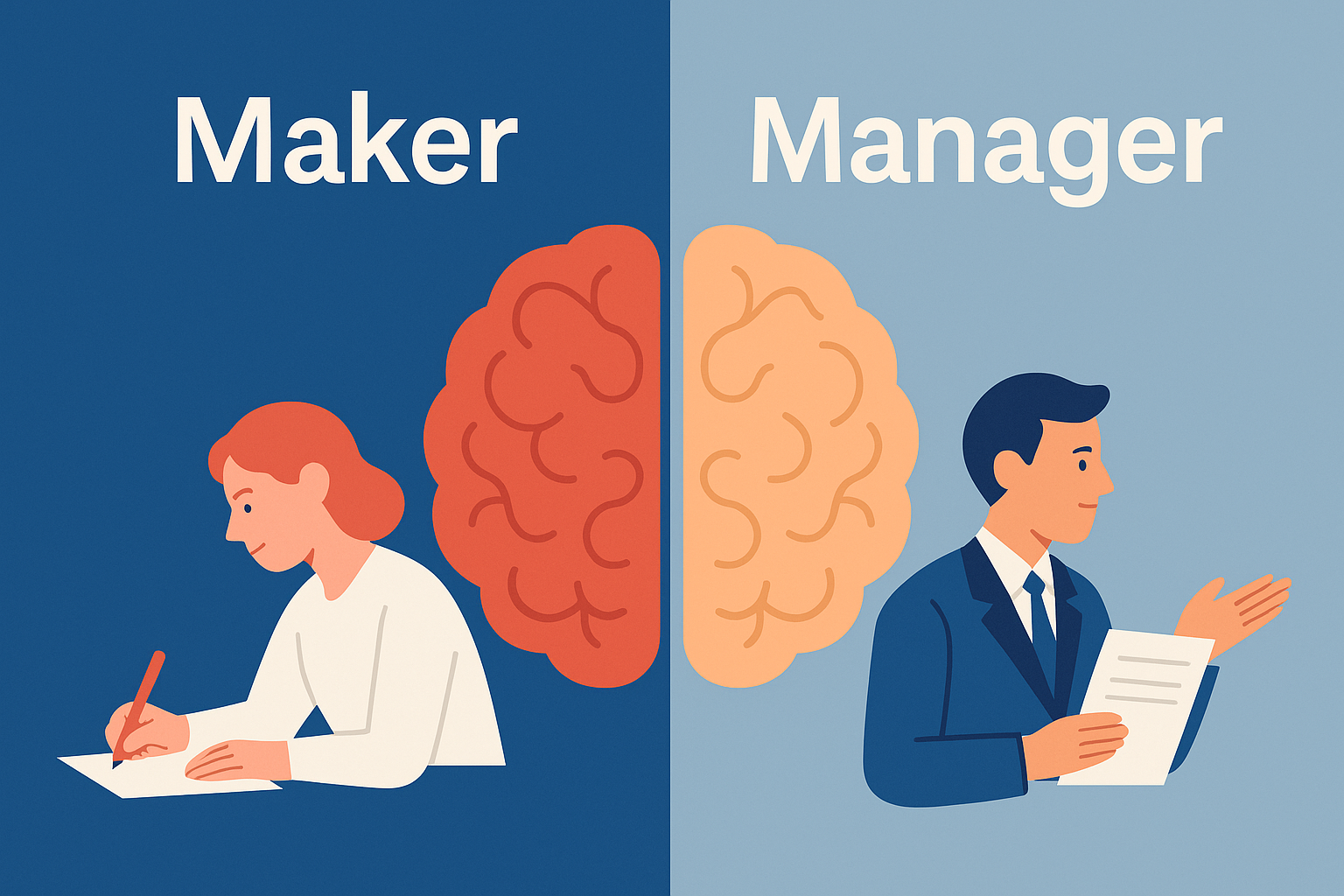Running a small business often feels like living two lives in one day.
One moment, you’re creating — writing content, serving clients, designing systems. The next, you’re managing — taking care of admin, replying to messages, juggling decisions.
It’s easy to call that “multitasking,” but the truth is, it’s context switching, and it quietly drains your energy and focus.
As someone who loves to identify ways to improve my productivity and make the most of every work hour (while ensuring plenty of non-work hours!), I’m always curious about frameworks that explain why certain days flow better than others. That curiosity is what led me to Paul Graham’s essay Maker’s Schedule, Manager’s Schedule.
Graham describes two distinct ways of working:
- The Maker’s Schedule thrives on long, uninterrupted stretches of time to create, build, and innovate.
- The Manager’s Schedule runs on shorter, hour-by-hour blocks for meetings, decisions, and communication.
Both are necessary. The tension comes when one person — you — has to live in both worlds.
The Clash of Two Worlds
Most small business owners are both the visionary and the implementer. You’re the creative engine and the operational anchor, the person who dreams up the idea and then executes every detail.
But switching between those modes isn’t seamless. Maker time requires deep focus and creative flow — it’s hard to access when you’re fielding messages or managing others. Manager time, on the other hand, depends on structure, collaboration, and responsiveness. When you bring Maker energy into a Manager day, you can appear distracted or detached.
When we don’t respect the difference between the two, we end up in a constant state of frustration — working hard, but rarely feeling in control. It’s not that we lack discipline or organization; it’s that we’re asking our brains to function in two completely different ways at once.
Awareness Comes First
The good news: before you can fix it, you only need to notice it.
Start by observing your natural energy patterns. When are you at your creative best? When does communication feel easiest? What time of day do interruptions frustrate you the most?
For example, you might find that mornings are your Maker hours — when you can write, create, or problem-solve deeply. Afternoons might be better suited for Manager tasks like meetings, email, or follow-up.
I like Fridays for Manager-related tasks… I think of them as “Follow-up Fridays”, whereas Wednesdays are all about creation and Maker energy.
The key is awareness. Once you see the rhythm, you can begin to honor it — instead of fighting it.
Next: Turning Awareness Into Action
In Part 2, we’ll move from awareness to application. I’ll share practical ways to design your schedule so both roles thrive — without feeling like you’re constantly switching gears.
For now, give yourself permission to simply notice which “you” is showing up — the Maker or the Manager. Awareness is the first step toward a more focused, fulfilling, and sustainable work rhythm.
